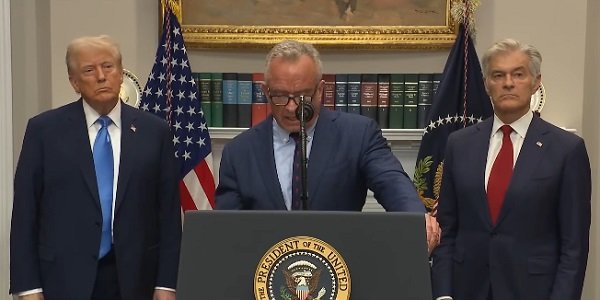Alberta
$150 a week from the Province to help families with students 12 and under if teachers go on strike next week
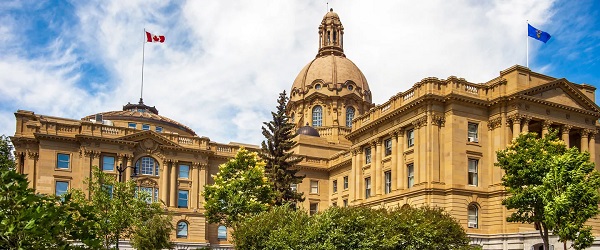
Alberta’s government will be providing financial assistance and educational resources to support parents and students in the event of a teacher strike.
Eligible parents or guardians would receive $30 per day, or $150 per week, per student for the duration of the ATA’s labour action. The first payment will be made on Oct. 31.
More information about the application process will be available shortly. To get ready, parents can set up an Alberta.ca verified account at alberta.ca/alberta-ca-account.
Alberta teachers have rejected a four-year deal, putting the ATA in a position to strike by Oct. 6, leaving countless families uncertain about what happens next.
As a teacher strike becomes more likely, Alberta’s government has developed a responsible plan to support kids and keep them learning while paying parents back for unexpected education expenses in the event of a strike.
This plan includes a new payment program to directly support parents experiencing financial strains because of the strike. An online learning toolkit following the grades K-12 curriculum has also been developed to support students with at-home learning.
“I’m disappointed that ATA members have rejected the settlement, choosing instead to go on strike. Students and families need to know we will support them during this time of uncertainty, so we are releasing our plan today to provide payments directly to families and to support at-home student learning.“
“Our goal is to keep our kids in the classroom. Our government is ready, willing and able to head back to the bargaining table at any time.”
With 80,000 new students joining our education system in the last two years alone, Alberta needs this investment now, more than ever. That’s why Alberta’s government invested $8.6 billion to build and renovate more than 130 schools. This is more than any provincial government has invested in the history of the province.
The government is aware the ATA may still choose to go forward with their plan to strike. In the event of a strike, Alberta’s government has a balanced plan to support students and parents through this challenging time.
Payment program
To help ease the extra costs families may face while children are away from their desks during labour action, Alberta’s government is introducing a new payment program for parents. This program would be available to parents and guardians of students aged 12 and under who attend a public, separate or francophone school and are affected by teacher strikes.
Eligible parents or guardians would receive $30 per day, or $150 per week, per student for the duration of the ATA’s labour action. The first payment will be made on Oct. 31.
The payments would support families while students are unable to attend school to help offset additional costs like childcare, educational supports such as tutoring, or other activities to keep students engaged.
More information about the application process will be available shortly. To get ready, parents can set up an Alberta.ca verified account at alberta.ca/alberta-ca-account.
Learning supports
To give families flexibility during a potential labour disruption, Alberta Education and Childcare created a free toolkit for parents to support their child’s learning in the event that schools are closed.
The toolkit provides resources that follow the grades K-12 curriculum. The resources are available in English, French and French immersion and focus on the core subjects of language arts, social studies, math and sciences. These resources will be updated weekly.
“We understand that the possibility of a teacher strike brings uncertainty and concerns for families. That’s why Alberta’s government is supporting families with practical tools and resources to help maintain their child’s learning if schools are closed. This parent toolkit offers flexibility, choice, and curriculum-aligned materials to empower families, ease the pressure they’re facing and keep students engaged.”
Classroom complexity funding
Throughout bargaining, teachers have advocated for more support to deal with the issue of increasing classroom complexity. Despite the teachers voting to reject this deal, Alberta’s government remains committed to help address increasing classroom complexity head on and will be allocating $100 million per year over three years. These funds will hire 1,500 net new education assistants. To further address classroom complexity, the remaining funds may be used to hire up to 725 more education assistants, or used to complete autism, mental health, occupational therapy, physiotherapy, or speech-language pathology assessments for students.
Alberta’s government has a strong, responsible plan to keep students learning. No matter what the union decides, government will remain unwavering in our commitment to stand with families.
Key facts:
- The offer rejected by ATA members would have made Alberta teachers the highest paid in Western Canada after provincial taxes.
- It would have provided a general wage increase of 12 per cent over the four-year term, as well as a wage grid unification which would have provided more than 95 per cent of teachers even larger wage increases up to 17 per cent.
- It would have provided tremendous investments in classroom supports to help alleviate population growth and classroom complexity pressures with the hiring of 3,000 new teachers in public, separate and francophone classrooms.
Related information
Alberta
Halfway River First Nation makes history with Montney natural gas development deal
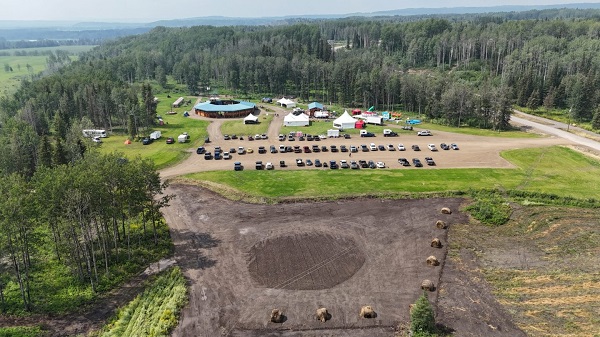
In northeast B.C., about 75 kilometres from Fort St. John, Halfway River First Nation sits in the heart of the Montney, one of North America’s largest natural gas plays. Photo courtesy Halfway River First Nation
From the Canadian Energy Centre
By Will Gibson
Greg Kist has seen plenty of change during more than three decades working in the energy industry. But the former executive with Petronas and Progress Energy has rarely experienced a history-making moment.
That happened in July 2024, when the B.C. government awarded the Halfway River First Nation what’s known as oil and gas tenure in the heart of the Montney play.
It’s an agreement that grants the Nation decision-making authority over the exploration and development of petroleum and natural gas resources on more than 34,000 hectares of Crown land in its traditional territory, located approximately 1,000 kilometres northeast of downtown Vancouver.
That agreement is now moving further into action with a deal between Halfway River-owned Tsaa Dunne Za Energy (TDZE) and ARC Resources.

Members of the Halfway River First Nation participate in a field tour with the BC Energy Regulator in June 2025. Photo courtesy BCER
The agreement, signed earlier this year, will see TDZE work with Calgary-based ARC to develop about 25 per cent of the tenured land.
The region is adjacent to ARC’s existing Attachie natural gas operations, which are rich in high-value natural gas liquids.
The company describes Attachie as one of its most profitable assets, which can be expanded thanks to the TDZE agreement.
“This land was deferred from development for more than two decades while sitting in the premier natural gas play in North America,” says Kist, one of TDZE’s managing executives.
“Unlocking it will generate all kinds of economic activity and royalties for the B.C. government that help pay for schools and health care. But it will also generate the same benefits for the Halfway River First Nation.”
ARC plans to integrate the new areas using existing roads, pipelines and other infrastructure from Attachie.
Developing the land will still require consultation with the Halfway River First Nation.

Drilling in the Montney play straddles the border between northeast B.C. and northwest Alberta. Photo courtesy ARC Resources
“This is very much about Tsaa Dunne Za Energy delivering the best return on this particular asset for its shareholders, which are the members of the Halfway River First Nation,” Kist says.
In addition to granting tenure to develop oil and gas on the land, the B.C. government and Halfway River have implemented a landscape planning pilot to mitigate the impacts of development on the Nation’s Treaty 8 rights and manage potential cumulative effects of new development.
“The tenure award and landscape planning pilot will help to ensure that oil and gas development in these areas is sustainable and managed in accordance with the values of the Halfway River First Nation,” Chief Darlene Hunter said in a statement.
Kist sees the agreement as a template for other governments, energy companies and First Nations to follow.
“This has the potential to be the model for cooperative development so that we can develop resources in the right way that benefits governments, First Nations and industry. I’m proud to be a part of this because everybody involved wins from this.”
Alberta
With no company willing to spearhead a new pipeline under federal restrictions, Alberta takes the lead
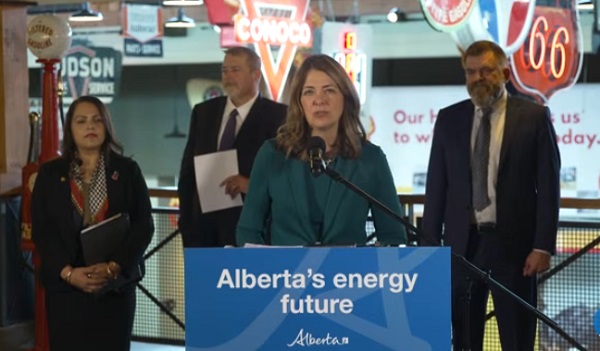
Alberta leads as proponent for West Coast pipeline
Alberta’s government, acting as proponent, will lead a technical advisory group of companies with Indigenous participants to advance a West Coast pipeline application.
With the advice and technical support of three major pipeline companies, Alberta’s government, acting as proponent, will develop and submit a formal application for a project of national significance to the Federal Major Projects Office under the Building Canada Act. Indigenous communities in Alberta and British Columbia are being engaged from Day 1. Indigenous co-ownership, partnership and perspectives will be critical to every stage of project development and execution.
The advisory group will undertake the early planning, technical assessment and application for an oil pipeline proposal to the northwest coast of British Columbia. When completed, the project will significantly increase market access to responsibly and ethically produced Canadian crude oil products.
“This project application is about more than a pipeline; it’s about unlocking Canada’s full economic potential. By doing this the right way from Day 1 with Indigenous partners and industry expertise, we will deliver a proposal that proves this project is undeniably in the national interest. Together, we are charting a path to secure Canada’s energy future for generations while bringing the world’s most ethically and responsibly produced energy to market.”
The goal of this planning and pre-front end engineering and design work is to determine the general path and size of the pipeline, quantify costs, initiate early Indigenous engagement and partnership, and make the clear case that this pipeline is in the national interest. Alberta’s government will contribute $14 million to support early planning work including cost estimates, engagement and development of a credible proposal for federal consideration.
“We already see Canada as an energy powerhouse, and with the right infrastructure, moving toward superpower status is both realistic and achievable. Increased market access from Alberta to tidewater will scale Canada’s export markets and diversification, while supporting the federal government’s newly stated ambition of becoming an energy superpower.”
Indigenous leadership and perspectives are essential to guiding major projects like this that will grow our economy, safeguard the environment and create lasting opportunities for Indigenous partners. Our engagement strategy will reflect the diversity of Indigenous governance structures and be tailored to reflect each community’s unique context. By bringing together innovation and technology with Indigenous perspectives and cultures, we are creating the conditions for meaningful dialogue and the right mix of expertise to shape a project that reflects shared values and priorities.
“This is about partnerships and building trust from Day 1 – ensuring Indigenous voices shape the decisions that affect their lands and futures. Alberta’s government is committed to respectful, transparent engagement that recognizes Indigenous communities as rights holders, leaders and owners in the prosperity we build together.”
“Fort McKay First Nation welcomes the opportunity to be engaged from the very beginning of this important project. True partnership means listening to Indigenous voices, respecting our lands and ensuring our people share in the benefits. By working together with government and industry, we can create opportunities that strengthen our communities, while showcasing the incredible potential of Alberta’s energy sector.”
“The National Coalition of Chiefs has always said that oil and gas participation, including ownership opportunities, can be a way to drive economic reconciliation. We are happy that Alberta is leading an effort to get another pipeline to the West Coast, and we are especially happy that they have decided to engage with Indigenous nations in B.C. and Alberta right from the very beginning of the process.”
The technical advisory group will include multiple industry participants, bringing expertise in engineering, construction, Indigenous relations and market demand. The groups efforts will be supervised by a panel that currently includes:
- Larry Kaumeyer, deputy minister, Energy and Minerals (co-chair)
- Alex Pourbaix, executive chair, Cenovus (co-chair)
- Rajan Sawhney, Minister of Indigenous Relations
- Hal Kvisle, energy industry executive
- Roderick Graham, board director, AER
- Chief Jim Boucher, chair, president and co-founder, Saa Dene Group of Companies
- Al Monaco, former president and chief executive officer at Enbridge
- Corey Bieber, board director, Vermilion Energy
- Chris Sankey, principal owner and president, Blackfish Enterprises
- Dave Lamouche, president, Metis Settlements General Council
The project of national significance application process will explore all opportunities to deliver Alberta’s responsibly produced energy resources to market, while carefully assessing all aspects required to advance a northwest coastal crude oil pipeline.
Quick facts
- The expected application submission to the Federal Major Projects Office is approximately spring of 2026.
- The three companies participating in the technical advisory group are South Bow, Enbridge and Trans Mountain.
- Canada has the fourth-largest proven oil reserves globally and is the fourth-largest global oil producer.
- Net export receipts of crude oil have climbed from $6 billion in 2000 to $130 billion in 2024.
- Additional infrastructure from Alberta’s oilsands to B.C.’s coast will ensure Alberta energy resources can contribute to meeting significant Asian demand from countries like Japan, Korea, China and India.
-
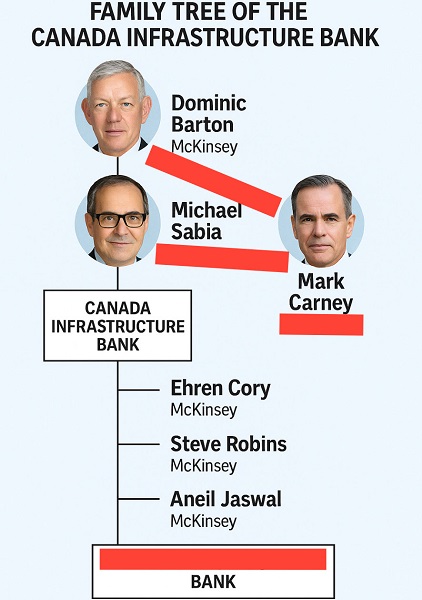
 Business2 days ago
Business2 days agoDominic Barton’s Shadow Over $1-Billion PRC Ferry Deal: An Investigative Op-Ed
-

 Alberta2 days ago
Alberta2 days agoAlberta refuses to take part in Canadian government’s gun buyback program
-
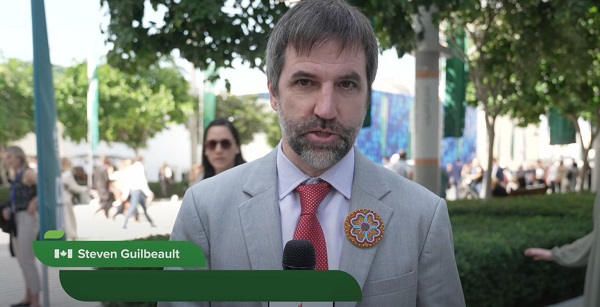
 Censorship Industrial Complex2 days ago
Censorship Industrial Complex2 days agoCanada To Revive Online Censorship Targeting “Harmful” Content, “Hate” Speech, and Deepfakes
-
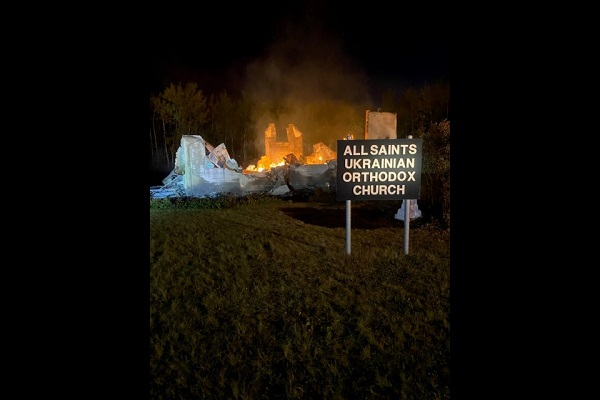
 Alberta2 days ago
Alberta2 days agoOrthodox church burns to the ground in another suspected arson in Alberta
-
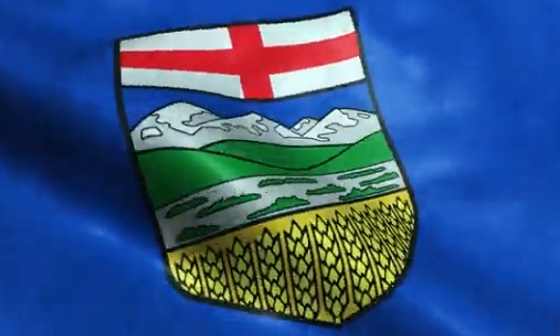
 Alberta2 days ago
Alberta2 days agoAlberta puts pressure on the federal government’s euthanasia regime
-

 Fraser Institute1 day ago
Fraser Institute1 day agoAboriginal rights now more constitutionally powerful than any Charter right
-

 Business1 day ago
Business1 day agoNew PBO report underscores need for serious fiscal reform in Ottawa
-

 Business1 day ago
Business1 day agoTaxpayers deserve proof of how politicians spend their money




